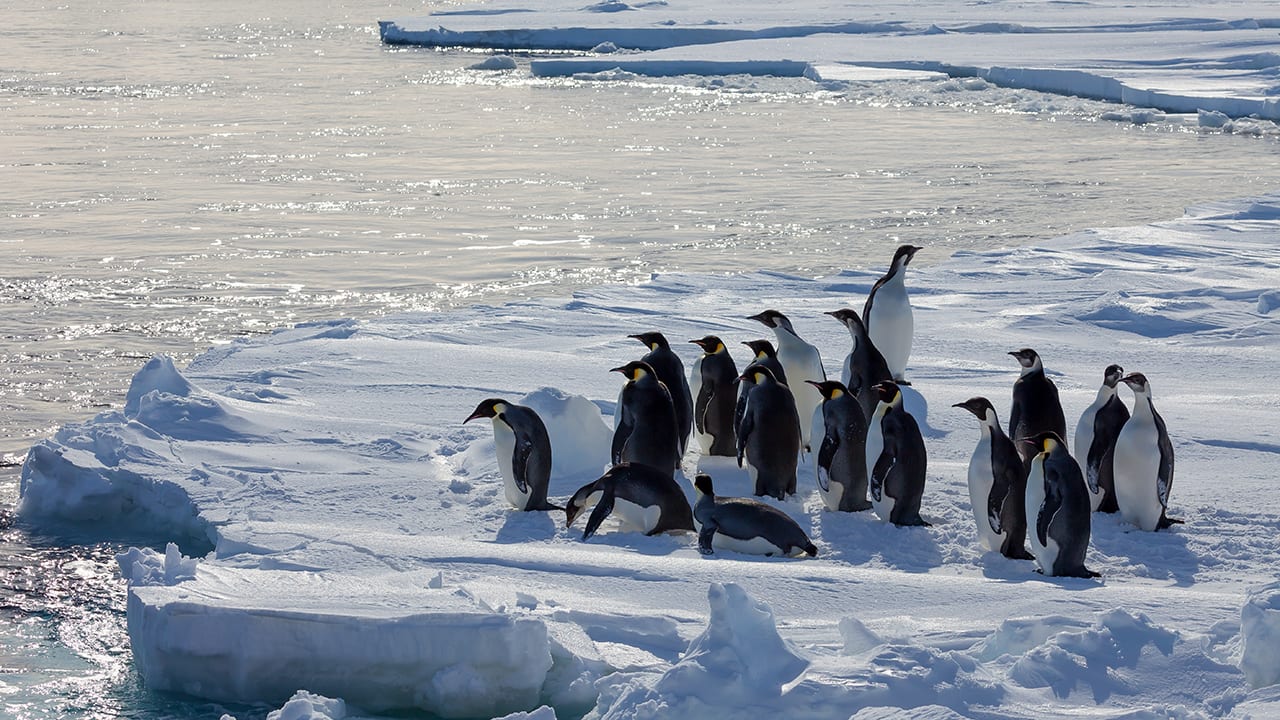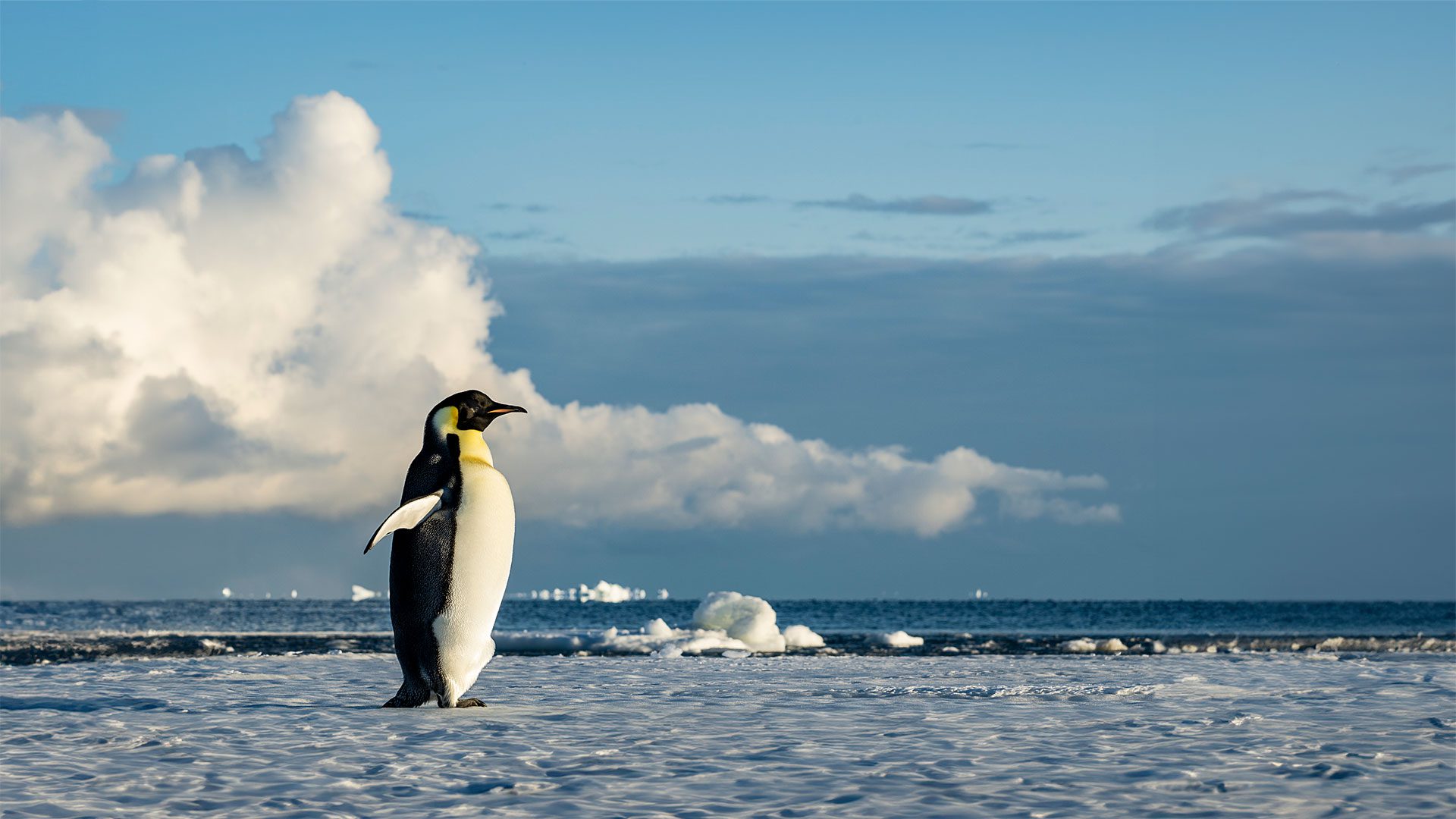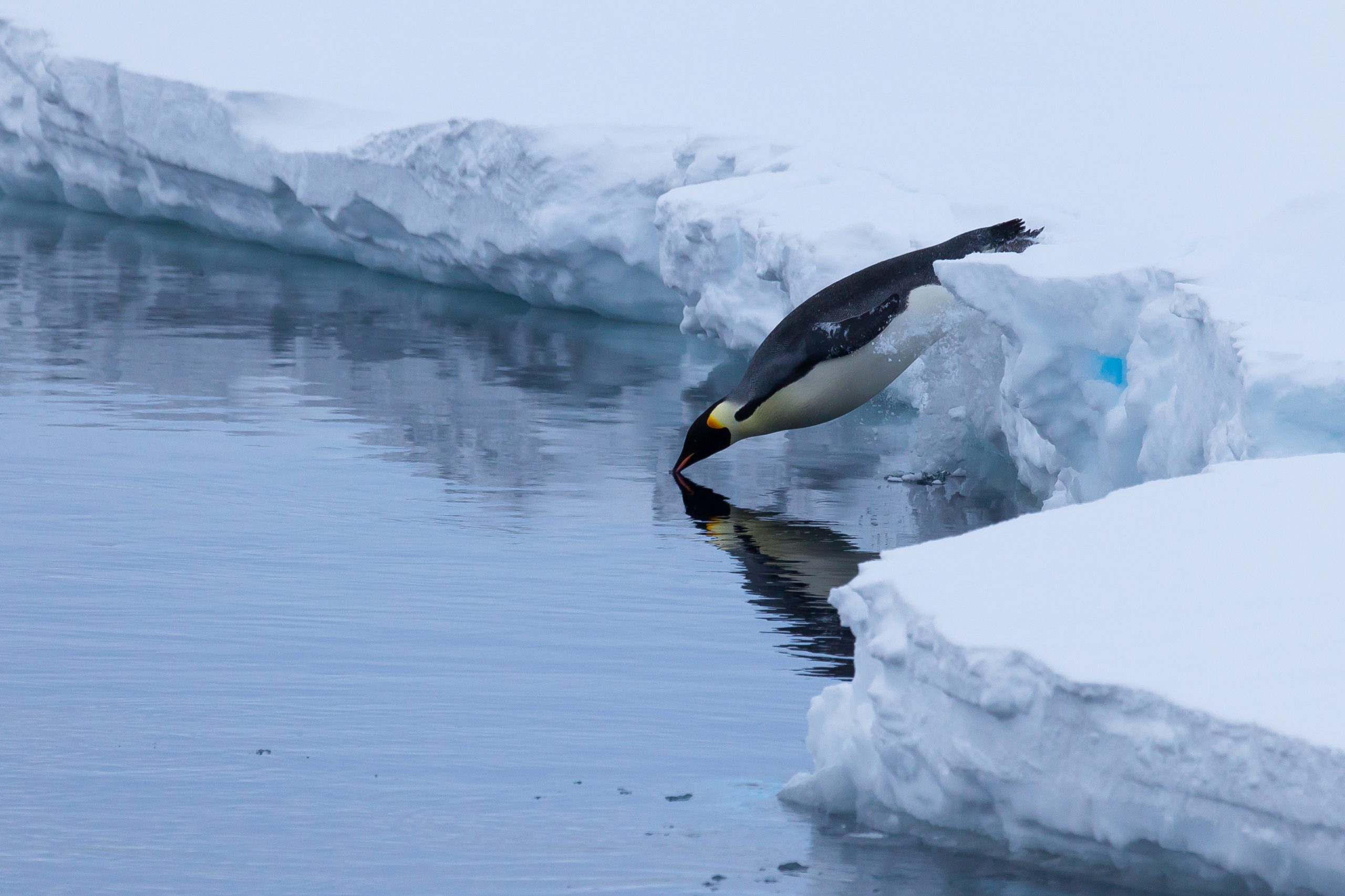
Fascinating facts about emperor penguins
We might chuckle at the sight of penguins waddling over ice, but these flightless birds would put Olympic swimmers to shame. Learn more about emperor penguins, the largest penguin in the world and permanent residents of Antarctica.
Estimated reading time: 5 minutes
Emperor penguins are the world's largest penguins. The flightless birds stand up to 1.2 meters (4 feet) tall, about the height of a six-year-old child, and weigh as much as 45 kilograms (100 pounds). Being big helps them stay warm, as big bodies conserve heat better than small ones.
Emperor penguins are minuscule, however, compared to their extinct relatives. From fossils we know that a species of Antarctic penguin that lived about 40 million years ago stood two meters (6.5 feet) tall and may have weighed 115 kg (253 pounds).
Baby, it's cold outside
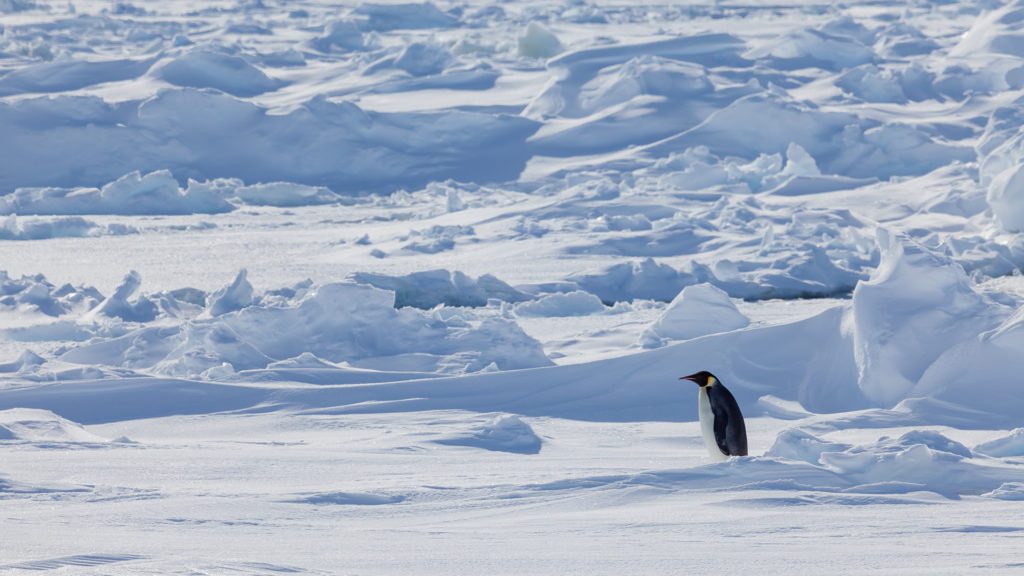
A single Emperor Penguin standing out on the ice. (Peter Kimball, © Woods Hole Oceanographic Institution)
Emperor penguins are the only vertebrate animals to breed in the harsh Antarctic winter, where temperatures can plunge to -50ºC (-58ºF) and winds can howl at up to 200 kilometers per hour (124 mph).
Although their environment may be harsh, the birds are well adapted to withstand the cold. A layer of wooly down next to the skin is covered by dense layers of feathers that overlap like roof tiles. Thick blubber under the skin, along with small bills and flippers, also help hold on to the heat.
Life on ice
Emperor penguins may be the only birds to never set foot on land. They are entirely dependent on sea ice. They need holes in the ice to enter the water, where they hunt for fish, squid, and krill. They also need thick, stable ice as a platform for raising chicks.
Emperor penguins need just the right amount of ice. Too much ice can place penguin breeding colonies a long distance from their fishing holes, which can mean longer hunting trips for adults and less food for chicks. Too little ice, or ice that breaks up too early, can cause chicks to fall in and drown. This delicate balance puts emperor penguins at risk from climate change and shrinking sea ice.
Deep divers
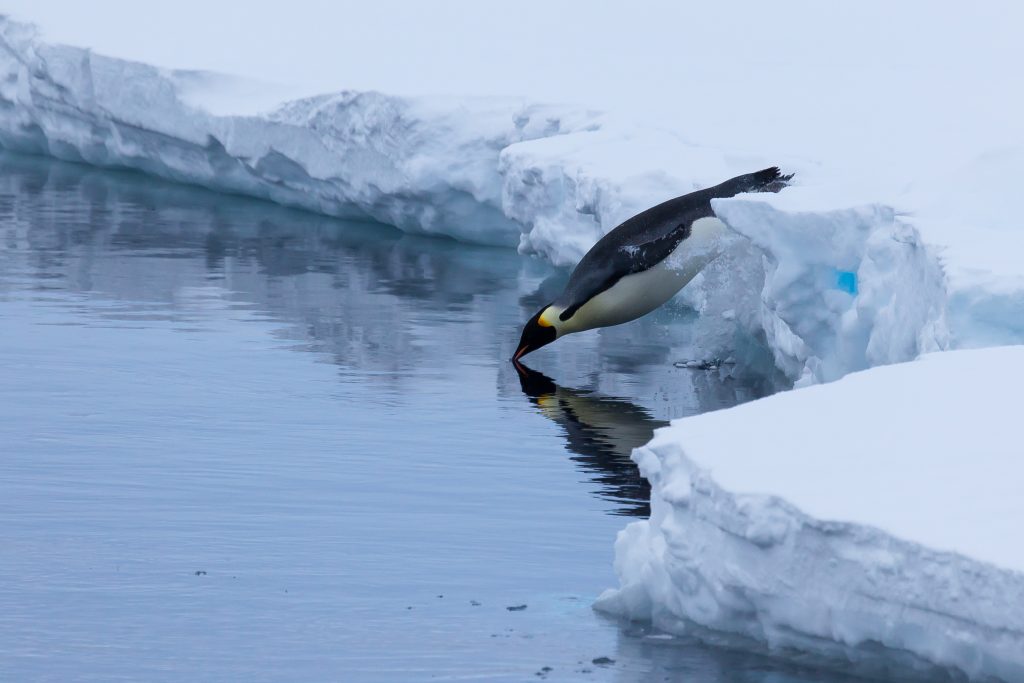
An emperor penguin dives into the Antarctic water. (Photo by Peter Kimball, ©Woods Hole Oceanographic Institution.)
They may be famous for their waddle, but emperor penguins have a speedier way of getting around on the ice. They do a belly flop and slide forward, using their wings and clawed feet to pull themselves along. This move, called tobogganing, helps them make the long trek between their fishing grounds and breeding grounds, which can be up to 160 km (99 miles) apart.
Emperor penguins can soar through the sea and dive deep, assisted by their dense bones. Although most penguin dives are at depths of 182 meters (600 feet) or less, a female emperor penguin was once observed diving to a depth of 535 meters (1,755 feet) near McMurdo Sound.
When they are done foraging, emperor penguins dive deep, gather speed, and race toward the exit hole on a stream of bubbles. The bubbles are created when penguins use their muscles to shift their feathers, releasing trapped air. The bubbles act as a lubricant, reducing drag from friction. The penguin speeds up, launches itself into the air, and lands on the ice with a thump. This explosive exit helps them avoid ambush by hungry leopard seals, which may lurk at the ice edge.
Huddled masses
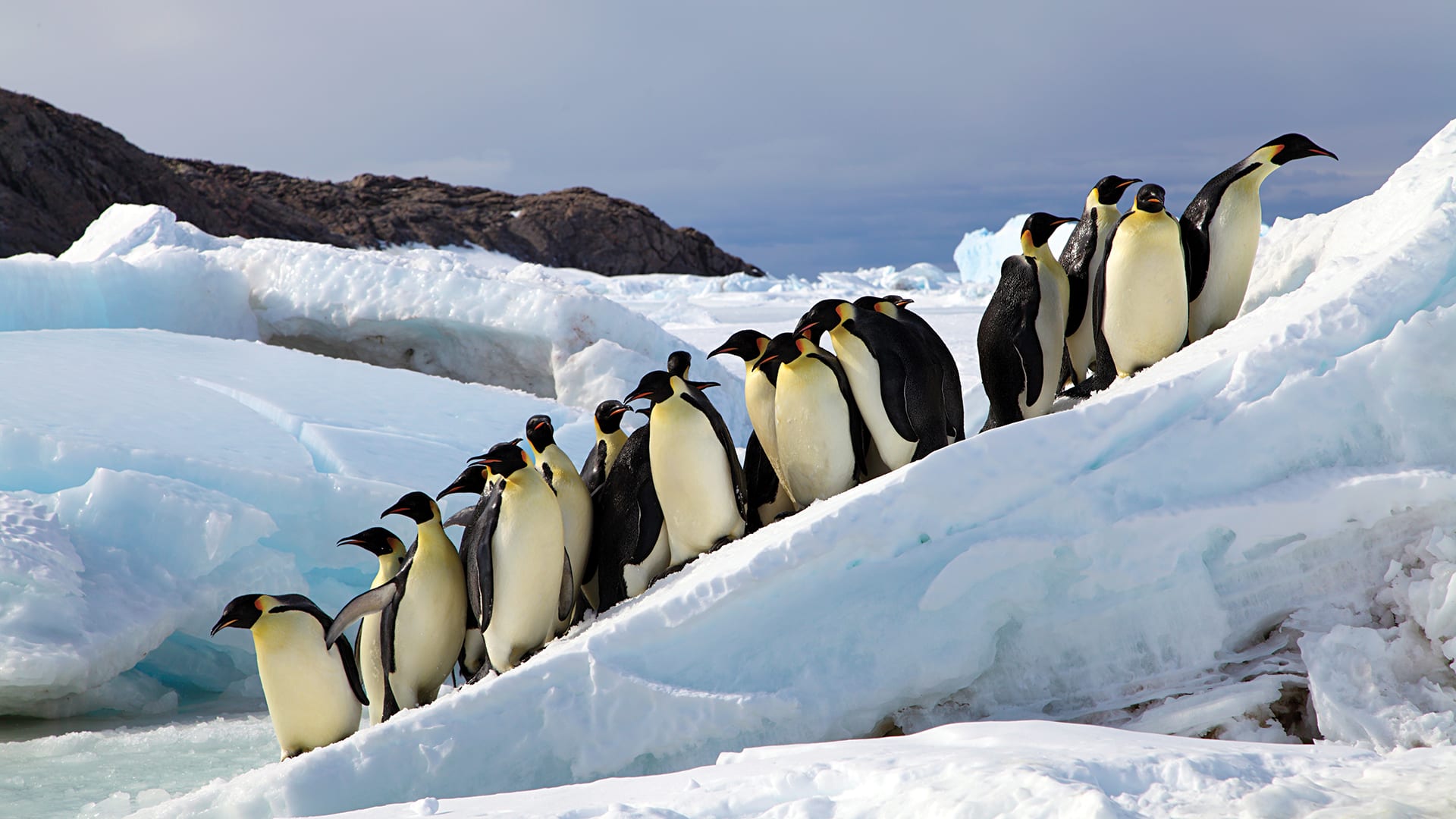
Emperor penguins huddle together on a precarious ice sheet. (Photo by Stephanie Jenouvrier, ©Woods Hole Oceanographic Institution)
Emperor penguins are expert huddlers. Adults and chicks alike will pack together in clusters of hundreds or thousands of birds to protect themselves from the freezing temperatures and howling winds of Antarctic winters. Each penguin takes a turn on the icy perimeter before nudging into the warm, wind-free interior.
Researchers study videos of penguin huddles to learn the secrets of the group's movements. One penguin merely has to inch forward, which causes its neighbors to react, similar to cars in bumper-to-bumper traffic. This causes a wave to pass through the huddle and produces a slow churning motion, while keeping the group densely packed for maximum warmth.
Co-parenting
Emperor penguin pairs share parenting. In May and June, females lay one softball-sized egg each, which they promptly pass to their mates. The females immediately set off for the open sea, where they will fatten up so they can return to feed their chicks.
Male emperors keep the eggs warm, carefully cradling them on top of their feet and covering them with a fold of skin known as a brood pouch. For two months, the males eat nothing and huddle for warmth in the freezing dark, losing almost half their body weight.
In July and August, the females return with a belly full of food, which they regurgitate for the newly hatched chicks. The males then take to the sea to feed themselves. The parents continue taking turns fishing and caring for their chicks, until the youngsters are old enough to stay alone in groups, called crèches. By December, the chicks are able to swim and fend for themselves.
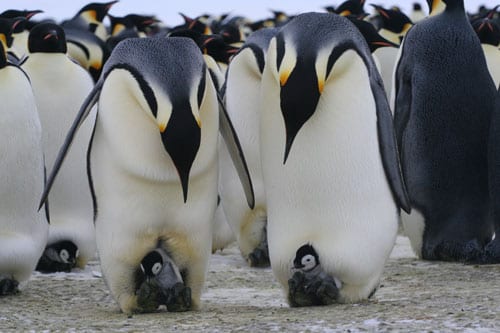
Emperor penguin fathers keep their chicks warm while their spouse forages for food. (Photo by Samuel Blanc.)
Emperor penguin pairs share parenting. In May and June, females lay one softball-sized egg each, which they promptly pass to their mates. The females immediately set off for the open sea, where they will fatten up so they can return to feed their chicks.
Male emperors keep the eggs warm, carefully cradling them on top of their feet and covering them with a fold of skin known as a brood pouch. For two months, the males eat nothing and huddle for warmth in the freezing dark, losing almost half their body weight.
In July and August, the females return with a belly full of food, which they regurgitate for the newly hatched chicks. The males then take to the sea to feed themselves. The parents continue taking turns fishing and caring for their chicks, until the youngsters are old enough to stay alone in groups, called crèches. By December, the chicks are able to swim and fend for themselves.
Penguins from space
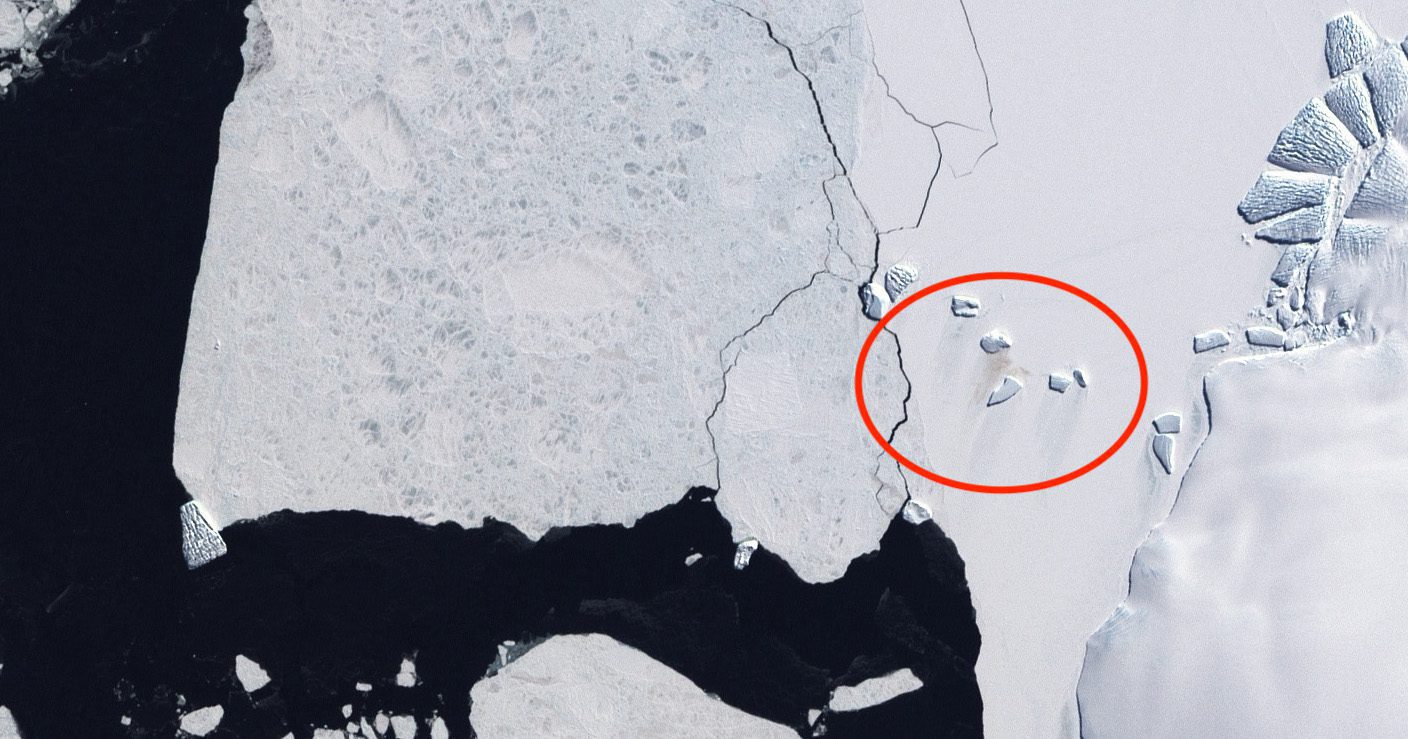
In this true-color image of Antarctica's Luitpold Coast, acquired in 2002, by NASA's Landsat 7 satellite, British Antarctic Survey (BAS) discovered a new way to estimate the size and location of penguin colonies. The circled section is stained a tell-tale brown from penguin guano. (NASA image by Robert Simmon, based on Landsat 7 data from the USGS Global Visualization Viewer.)
Satellites have opened a new window into emperor penguin colonies. Although penguins themselves are too small to be seen from space, their colonies show up from penguin guano, or penguin poop, which leaves a reddish-brown stain on the otherwise pristine Antarctic snow and ice. Satellite images allow researchers to count colonies across the continent, including ones that are inaccessible by land or sea. Researchers recently discovered several small, previously overlooked colonies, bringing the total to number of emperor penguin colonies to sixty-one.

